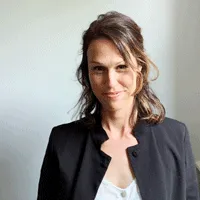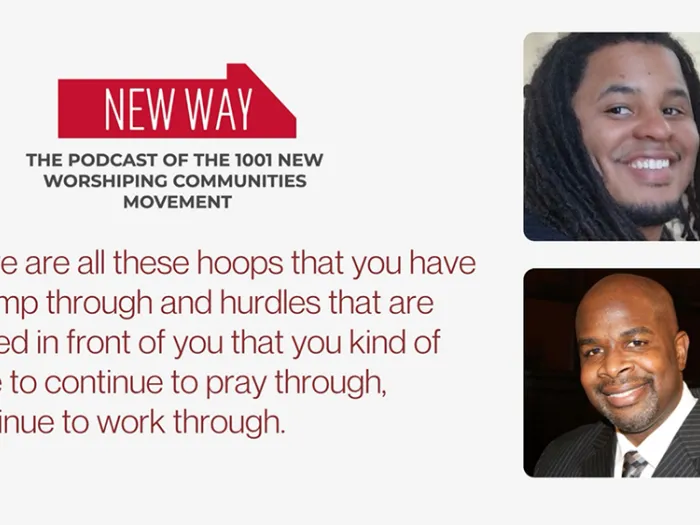When a church becomes an affordable home
‘It is not as hard as we like to think it is to make the world that God calls us to make,’ says podcast guest


"My theology is, like, we can do better. It is not as hard as we like to think it is to make the world that God calls us to make,” said the Rev. Shannon Ball, the latest guest on the “New Way” podcast. “It takes effort; it takes intention. It takes seeing the person in the midst of all these really difficult circumstances, but it can be done.” Ball started her career post-seminary doing re-entry preparation for women prior to their release from the Metro State Women's Prison of Atlanta. She currently serves as program director of Enterprise Community Partners (Southeast), where she puts her almost 20 years of experience working with justice-involved populations to tackle the achievement and development of affordable housing together with faith-based communities.
“It’s so expensive to be poor. It sort of makes you think, OK, we can do better. We can do better,” said Ball. While working with women coming out of the criminal justice system and trying to re-enter tenuous social support systems and tense or traumatized family systems, Ball saw the importance of a safe place to live — physically and emotionally. Many of her clients had symptoms of complex trauma from childhood and domestic abuse, as well as a history of housing insecurity. “My personal belief is that if you want to significantly reduce the women’s prison population in a generation, you can pour money into the prevention of childhood sexual abuse,” said Ball.
Ball grew up in a modest, middle-class family in the South. Her father was a Presbyterian minister, and her mother had her master’s degree in Christian education. They were both social justice advocates for the economically and racially oppressed. Ball, a teaching elder in the PC(USA), attended Columbia Theological Seminary in the early 2000s but knew early on that her ministry was not in the parish but serving marginalized communities in practical ways. Ball learned quickly the realities and signals of privilege that separated her from her clients and their families. She learned subtle and sympathetic ways to build bridges of understanding and trust.
“Just the constant everything, because it’s twice as hard,” Ball said as she described the unrelenting reality of her clients living day to day. “It is not that a person makes bad choices, but they made the best choice among only bad choices — or only poor choices — available to them.”
“I think once you get your head around that, it very much shifts your ability to be much more sympathetic and empathetic to how hard it is, quite frankly, to be economically or culturally disadvantaged,” she said.
“You're throwing good money after bad,” said Ball, who described how a person sinks money into an old car because they can’t afford another or keeps renting a barely inhabitable home. “You can’t afford to hold your landlord accountable for the unfair and illegal living conditions you’re in, so you just keep paying overinflated rent in a place that's really not safe,” Ball said before highlighting the vast shortage of affordable housing across the country.
In her current role as program director at Enterprise Community Partners (Southeast), a national affordable housing nonprofit, Ball works with their Faith-Based Development Initiative (FBDI) program, which addresses several issues regarding housing — housing policy, capital funding for its development and programs to support an ecosystem of affordable housing. According to their website, the FBDI program “provides houses of worship with the knowledge and tools to develop underutilized land into affordable homes and community facilities.” For largely volunteer-led faith communities, redevelopment can be an intimidating project, so Enterprise’s FBDI offers grants, capital, training, technical assistance, peer-to-peer learning and access to experts in the fields of development partners, architects and real estate lawyers to help houses of worship advance their projects to completion.
During this season of “New Way,” host the Rev. Sara Hayden and producer the Rev. Marthame Sanders have focused on the redevelopment of church property or the creative use of church facilities for social entrepreneurship. Hayden referred to a previous episode about two congregations working together to redevelop church property that didn’t raise local housing prices. “A lot of communities of faith with property are often approached by developers,” said Hayden, who understood the rationale that the proceeds can be used for mission, but that there is another economic outcome. “Statistics have shown that the majority of those properties that are sold are turned into developments that price people out of the neighborhood themselves.”
That’s part of why Ball says she loves the FBDI program — because it helps people act. “People are taking these amazingly well-positioned lots or buildings or houses of worship and making places for people to live that are going to change lives,” said Ball, who also described a few of the most common scenarios of church redevelopment that can include all or a portion of the physical site. Ball described cases where a church gave up a sanctuary to develop a multi-level, multi-use building with the new sanctuary on the ground floor, a health clinic on the second floor and affordable housing on the higher floors or churches that are only using thee of 10 acres in neighborhoods where the city has grown densely around them. They use the remaining acres or unused education wings and parking lots to create “legacy housing” to ensure that long-term residents of the area can remain in the community.
Ball rejoices in seeing communities of faith create literal homes and places of belonging for its neighbors who are being left behind by unchecked market capitalism. “They're going to take a family that would’ve struggled and enable them to blossom and succeed,” said Ball. “And if that is not the world that God calls us to live in, I don’t know what is.”
You may freely reuse and distribute this article in its entirety for non-commercial purposes in any medium. Please include author attribution, photography credits, and a link to the original article. This work is licensed under a Creative Commons Attribution-NonCommercial-NoDeratives 4.0 International License.




